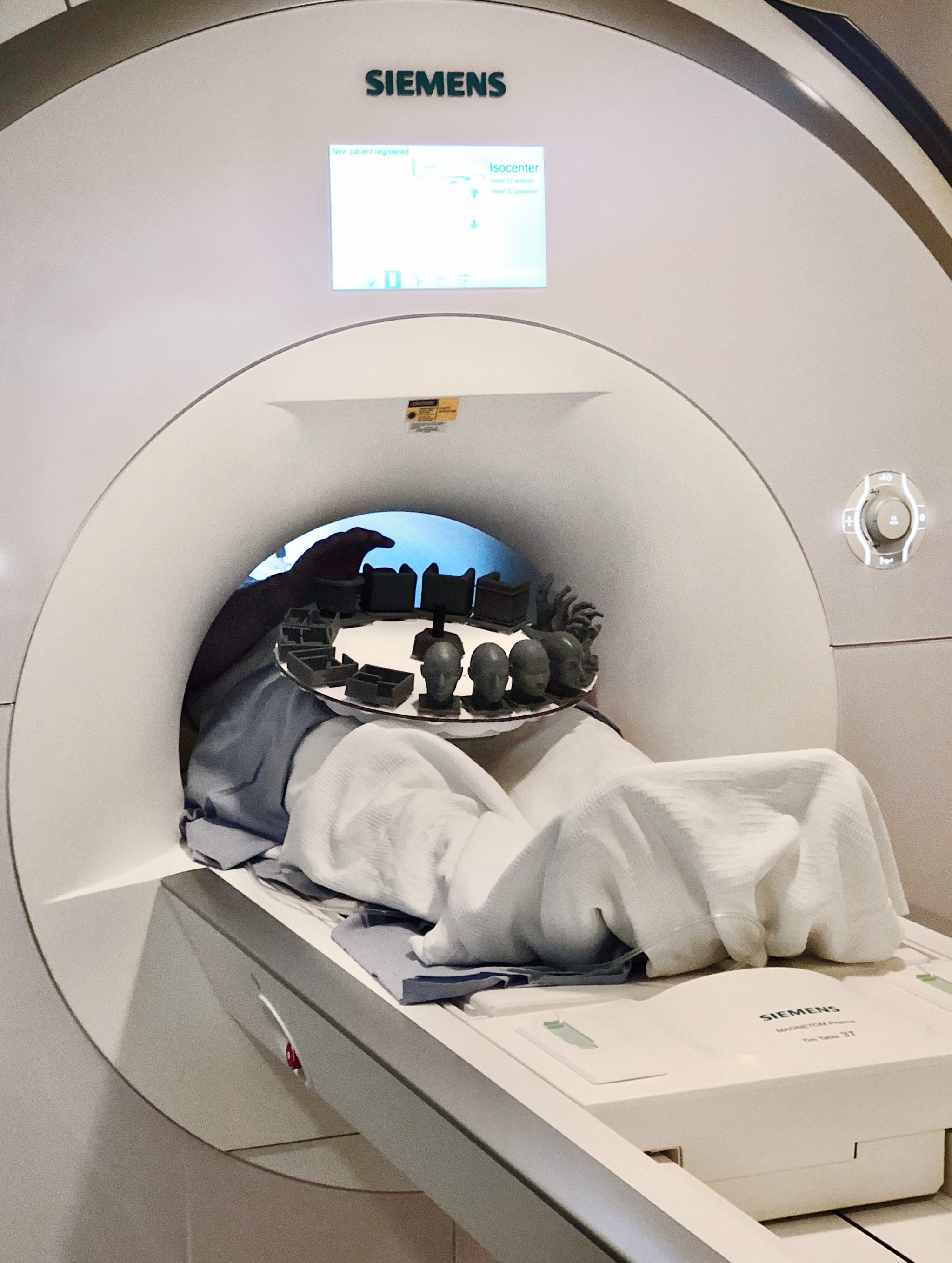Face value

More than 20 years ago, neuroscientist Nancy Kanwisher ’80, PhD ’86, and others discovered that a small section of the brain located near the base of the skull responds much more strongly to faces than to other objects we see. Known as the fusiform face area (FFA), it is believed to be specialized for identifying faces.
Now, Kanwisher and her colleagues have shown that people who have been blind since birth experience activity in the same region when they touch a three-dimensional model of a face with their hands. The unexpected finding suggests that this area does not require visual experience to develop a preference for faces.
Studying people who were born blind allowed the researchers to tackle longstanding questions regarding how specialization arises in the brain. “This is part of a broader question that scientists and philosophers have been asking themselves for hundreds of years, about where the structure of the mind and brain comes from,” says Kanwisher, a professor of cognitive neuroscience and a member of the McGovern Institute for Brain Research. “To what extent are we products of experience, and to what extent do we have built-in structure? This is a version of that question, asking about the particular role of visual experience in constructing the face area.”
In the new study, the team created a ring of 3D-printed objects that included faces, hands, chairs, and mazes, and rotated them so subjects could handle each one while being scanned with functional magnetic resonance imaging (fMRI).
With sighted subjects, they found—as expected—that an area corresponding to the location of the FFA was more active when they touched the faces than when they touched the other objects, though the signal was weaker than that produced when they looked at faces.
The researchers then did the same experiments, using tactile input only, with 15 subjects who had been blind since birth. To their surprise, they found that the brain showed face-specific activity in the same area, at levels similar to those recorded when sighted people handled the 3D-printed faces.
After exploring several possible hypotheses for why face selectivity always seems to develop in the same region, the researchers found evidence for one in particular: that this function arises in the FFA because of its connections to other parts of the brain, especially the frontal and parietal lobes, which are involved in high-level processing of sensory information.
“It’s suggestive of this very interesting story [about how] the brain wires itself up in development,” Kanwisher says.
Keep Reading
Most Popular
Large language models can do jaw-dropping things. But nobody knows exactly why.
And that's a problem. Figuring it out is one of the biggest scientific puzzles of our time and a crucial step towards controlling more powerful future models.
How scientists traced a mysterious covid case back to six toilets
When wastewater surveillance turns into a hunt for a single infected individual, the ethics get tricky.
The problem with plug-in hybrids? Their drivers.
Plug-in hybrids are often sold as a transition to EVs, but new data from Europe shows we’re still underestimating the emissions they produce.
Stay connected
Get the latest updates from
MIT Technology Review
Discover special offers, top stories, upcoming events, and more.